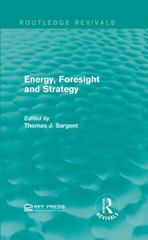Helpmeworkoutthefollowingquestions:
Questions.
Exercise 6.7 The distinction between autonomous and induced expenditure is important for the determination of equilibrium real GDP. Assume that the marginal propensity spend on domestic output is 0.70 and autonomous aggregate expenditure is zero. (a) What is the equation for the aggregate expenditure function under these assumptions? (b) Draw the aggregate expenditure function in an income-expenditure 45" line diagram. (c) What is the equilibrium level of real GDP illustrated by your diagram? (d) Explain why this is the equilibrium level of real GDP. Exercise 6.8 Suppose the slope of the AE function is 0.6. Starting from equilibrium, suppose planned investment increases by 10. (a) By how much and in what direction does equilibrium income change? (b) How much of that change in equilibrium income is the result of the change in induced ex- penditure? (c) How would your answers to (b) differ if the slope of the AE function was 0.8? 150 . Aggregate expenditure & aggregate demand Exercise 6.9 Suppose autonomous expenditure is 100 and there is no induced expenditure in the economy. (a) Write the aggregate expenditure function for this economy. (b) Draw the aggregate expenditure function and the 45 line in a diagram. (c) What is the equilibrium level of real output and income? (d) By how much would equilibrium real output change if autonomous expenditure increased to 125? Show the change in expenditure and equilibrium in your diagram for part (b). (e) What is the size of the multiplier? Explain your answer.Human lCapital Model: Fieinterpret the human capital growth model as follows: Suppose there are two groups of people in a country, the lowskilled and the highskilled, where the lowskilled have less human capital per person initially than the highskilled. Each type of worker produces output independently from the other, using efficiency units of labor and total factor productivity, 2, which is assumed to be common across groups. Each individual in this economy accumulates human capital on their own,1 and each has one unit of time to split between human capital accumulation and work. Assume that the high skilled have initially higher efficiency of learning: bh :=- bl , and that uh 6: ul . {all In all developed countries, there has been an increase in the socalled skill premium, the gap between the wages of highskilled workers and lowskilled workers, over the last 3D years. Determine how this model can explain this observation. 16 POINTS Consider the standard Solow growth model. Let productivity be denoted by A and let the production function be Y=AF(K,N). For simplicity, assume that there is no population growth (n = 0 so that N' = N). Let depreciation be denoted by dand the savings rate by s. a. Derive the per capita capital accumulation equation for =K/Nand the steady state level of capital per worker, $5. Please show the details of your derivation to earn points. Draw the Solow model graph showing the savings line and the depreciation line and marking the steady state level of k. b. Now, consider the "AK model" with production function Y = AK , where A is the exogenous productivity level. Again, assume that there is no population growth in the economy. Follow the similar steps in part a. to derive the capital accumulation equation in terms of capital per capita k. c. Based on the equations you derived in part b, draw a graph similar to that of the Solow growth model to show the steady state of the model in part b. If you cannot find such a steady state, please explain why. d. Recall that Solow growth model implies convergence in capital per capita. Does the model in part b has this feature?2. Suppose that the quantity theory of money holds. So, the equation of exchange holds for this economy and money demand (Mo) is proportional to nominal income Further. assume that we are in a classical economy in which real output (Y) is fixed by supply- side factors at 10,000 units and the money supply (M.) is fixed at 8090 units. a) Suppose that individuals initially wish to hold a quantity of money balances equal to one-fifth of their nominal income f.e., k - 1/5. Use the money market equilibrium condition to determine the initial equilibrium price level for this economy. b) Now suppose that individuals in this economy increase their money demand and wish to hold money balances equal to one-fourth of their nominal income, i.e., k is now 1/4. With output fixed by supply-side factors at 10,000 units and money supply unchanged at 8000 units how does this increase in money demand affect the equilibrium price level? How would you explain this change in the equilibrium price level? c) Graphically illustrate your answers to parts (a) and (b) in an aggregate demand-aggregate supply graph. For the aggregate demand curve(s), explicitly indicate some of the (P,Y) combinations used to graph the curve(s) on your graph. Also indicate the initial and new equilibria. 3. Use the classical loanable funds model to discuss how a decrease in government spending which is accompanied by a decrease in the issue of bonds to the public would affect the interest rate, investment spending, consumption and aggregate demand. (Note: Your graph MUST be accompanied by a discussion in complete sentences)










